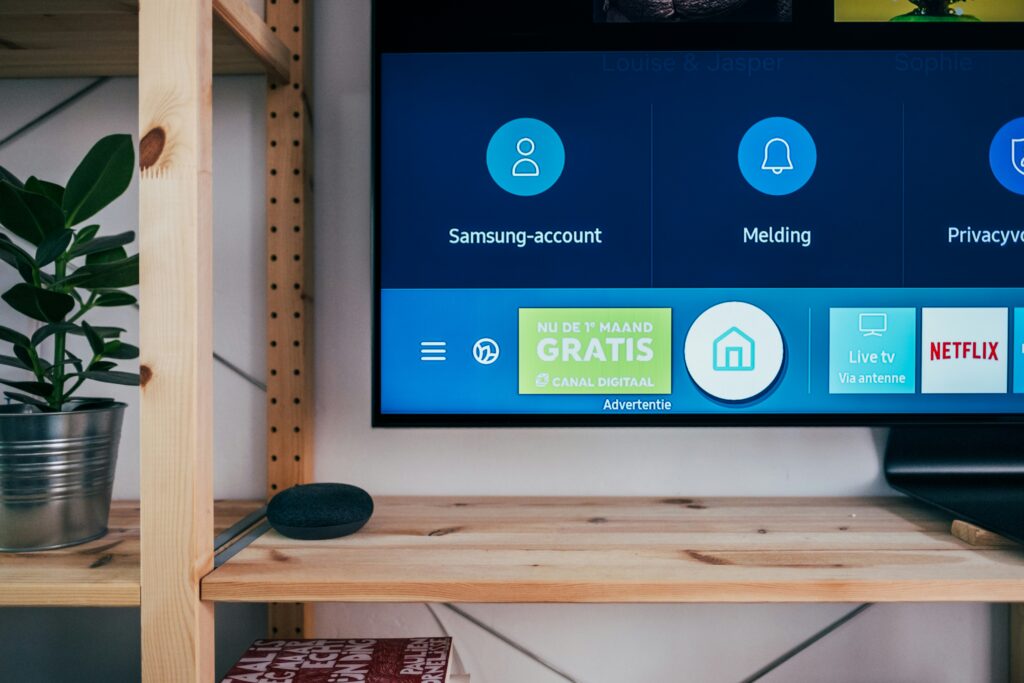
The landscape of entertainment is shifting at lightning speed. Streaming platforms have become the new frontier, reshaping how we consume our favorite TV series. Gone are the days when viewers were tethered to cable schedules and limited options. Today, a world of content lies just a click away, offering limitless choices that cater to every taste and preference.
As Hollywood embraces this digital evolution, it’s clear that streaming platforms are not merely an alternative—they’re redefining the industry. With so many players in the game and innovations emerging rapidly, what does the future hold for television? Join us as we explore bold predictions and exciting trends that will shape your binge-watching experiences tomorrow.
The Rise of Streaming Platforms

The rise of streaming platforms marks a revolution in how we enjoy entertainment. Once dominated by traditional cable networks, the industry has transformed dramatically over the past decade.
Platforms like Netflix, Hulu, and Amazon Prime have captured audiences with their vast libraries and original content. Viewers now crave flexibility—no more waiting for weekly episodes or sitting through commercials.
This shift is driven by changing consumer habits. People prefer on-demand access to shows that match their interests. The convenience of watching anywhere, anytime has become paramount.
Moreover, competitive pricing models attract subscribers looking for value without sacrificing quality. As more players enter the field, innovation continues to flourish.
Global reach also plays a crucial role in this growth story. Streaming services are breaking geographical barriers and delivering diverse programming to audiences worldwide.
The Impact on Traditional Television Networks
Traditional television networks are feeling the heat from the surge of streaming platforms. With viewers increasingly opting for on-demand content, these legacy networks face a critical challenge.
Advertisers have started shifting their focus as well. The allure of targeted ads on streaming services presents a more attractive option than traditional TV advertising methods. Networks must rethink their strategies to retain brand partnerships and audience attention.
Moreover, programming decisions are evolving. Legacy networks often rely on established formats and reruns, while streaming platforms embrace innovative storytelling and diverse genres that captivate younger audiences.
This shift in viewer behavior is prompting traditional channels to experiment with hybrid models—offering both linear broadcasting and digital options. As they adapt to this new landscape, survival hinges on understanding what modern viewers truly crave: flexibility, engagement, and fresh narratives that resonate with today’s society.
5 Bold Predictions for Future TV Series Releases

The landscape of TV series releases is evolving rapidly. One bold prediction is the rise of interactive storytelling. Streaming platforms will embrace technology to allow viewers to influence plot developments in real-time.
Next, we may see a shift towards shorter seasons with high-quality content. Audiences are leaning toward binge-worthy, concise narratives that maintain engagement without filler episodes.
Additionally, global collaborations will become commonplace. Viewers can expect more international co-productions that showcase diverse cultures and stories, appealing to a broader audience base.
Moreover, AI-driven recommendations will revolutionize how shows are marketed and discovered. Personalized viewing experiences could redefine audience preferences and consumption patterns.
Niche genres might flourish as streaming platforms cater to specific fan bases. From sci-fi thrillers to romantic comedies focused on unique perspectives—variety will be key in attracting subscribers seeking new adventures.
Emerging Trends in Hollywood
Hollywood is undergoing a transformation, driven by the rapid expansion of streaming platforms. Content creation is no longer confined to traditional studios. Independent creators and smaller companies are finding their voices in this evolving landscape.
Interactive storytelling is gaining traction. Audiences crave immersive experiences that allow them to influence narratives in real-time. This trend has started reshaping how stories are told on-screen.
The push for high-quality international content also stands out. Streaming services showcase diverse cultures and languages, expanding the global market for entertainment. Viewers now have access to rich narratives from around the world—something that was rarely seen before.
Short-form content continues its rise as well. With attention spans shrinking, platforms are experimenting with bite-sized episodes or mini-series formats catering to modern viewing habits, making shows more accessible than ever before.
Sustainability initiatives are becoming a priority within Hollywood productions, reflecting growing awareness of environmental concerns among audiences and creators alike.
The Importance of Diversity and Inclusion in Streaming Content
Diversity and inclusion are more than just buzzwords in the streaming industry. They represent a crucial shift towards authentic storytelling that resonates with wider audiences.
When platforms embrace diverse casts and narratives, they open doors to new perspectives. This not only enriches the viewer experience but also drives engagement across demographic lines.
More creators from varied backgrounds means fresh stories waiting to be told. These unique viewpoints can challenge stereotypes and foster understanding among viewers.
As audiences demand greater representation, streaming services have an opportunity to lead change. By prioritizing inclusive content, they can cultivate loyal fan bases eager for authentic representation.
Moreover, showcasing underrepresented voices is good business practice. It reflects societal trends and taps into markets hungry for relevant themes and characters that mirror their experiences.
How Technology is Changing the Way We Consume TV Shows
Technology is revolutionizing our viewing habits. The days of waiting for a weekly episode to air are fading fast. Now, entire seasons drop at once, allowing binge-watching marathons that keep viewers glued to their screens.
Smart TVs and streaming devices have made content more accessible than ever. With just a few clicks or voice commands, audiences can explore vast libraries of shows from around the world. This ease of access changes what we watch and when we watch it.
Interactive features also play a role. Viewers can influence storylines through live polls or choose different endings in some series. This creates an engaging experience that blurs the line between viewer and participant.
Mobile technology allows for on-the-go consumption too. Whether commuting or lounging in a café, catching up on favorite series has never been simpler or more convenient.
The Future of Streaming Platforms and the Entertainment Industry
The future of streaming platforms is poised to reshape the entertainment industry in unprecedented ways. As technology advances, viewers are likely to see even more personalized content experiences. Algorithms will become smarter, curating suggestions that resonate on a deeper level with individual preferences.
Moreover, the competition among streaming services will drive innovation. Expect platforms to experiment with interactive storytelling and immersive experiences that push creative boundaries. This could lead to collaborations between tech companies and traditional studios, resulting in fresh narratives that blend gaming and film.
Furthermore, global reach will expand significantly. Audiences from different cultures can access diverse stories at their fingertips. This shift encourages filmmakers to create content tailored for international markets while still resonating locally.
As we look ahead, it’s clear that consumer behavior is changing too. Binge-watching might evolve into a more fragmented viewing experience where audiences engage with series over longer periods through various formats—be it episodes released weekly or exclusive live events.
The emergence of new business models may arise as well; subscription-based systems could coexist with ad-supported tiers or pay-per-view options for special releases. Each model offers unique advantages for both consumers and creators alike.
With all these changes underway, one thing remains certain: streaming platforms will continue to be at the forefront of how we consume media today and in the years ahead—transforming not just what we watch but how we connect with stories on screens around us.
Click here to know more about the future of streaming platforms. Visit QAWire to know more about Hollywood updates.


